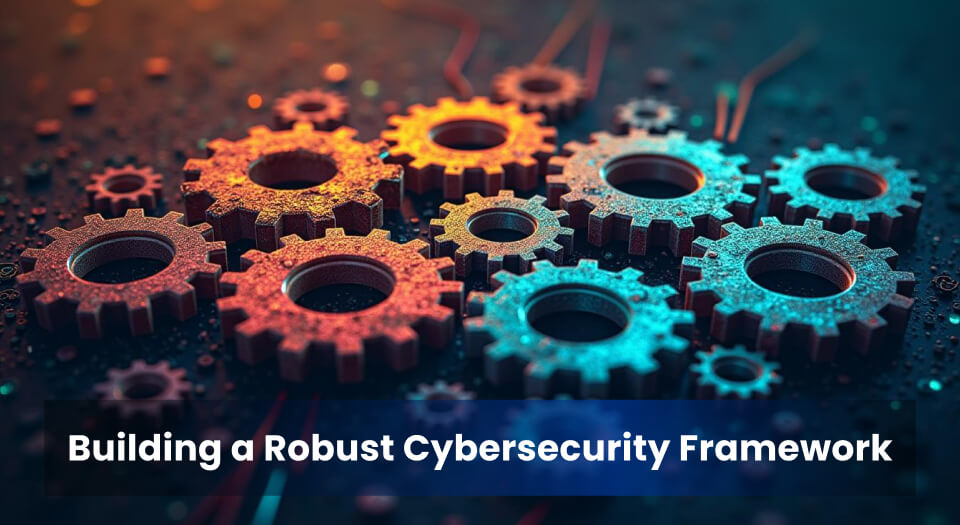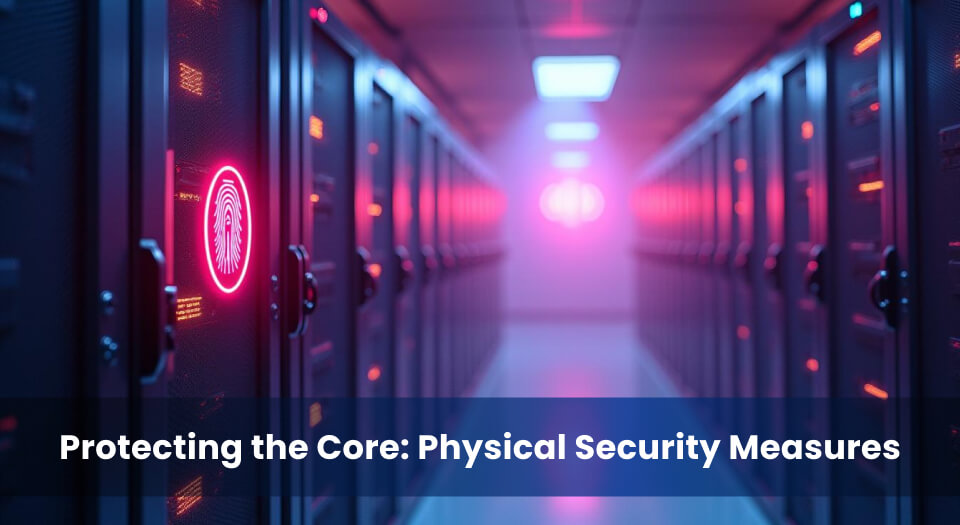
The increasing complexity of cyber threats has made IT security a critical priority for businesses of all sizes. Cybercriminals no longer target only large corporations; according to a 2023 report by the Australian Cyber Security Centre (ACSC), 43% of cyberattacks now impact small businesses, many of which lack the resources to recover from a major security breach. Without a robust security framework, organisations risk financial losses, reputational damage, and legal repercussions due to data breaches and system compromises.
A layered security approach is essential for mitigating these risks. Instead of relying on a single defence mechanism, businesses must implement multiple layers of security, each designed to protect against specific vulnerabilities. The seven layers of IT security—Policies & Awareness, Physical Security, Perimeter Security, Network Security, Application Security, Data Security, and Incident Response—work together to form a comprehensive defence strategy.
By integrating cybersecurity risk assessments and security gap analysis, businesses can proactively identify weaknesses and address compliance requirements. This structured approach not only safeguards sensitive information but also enhances operational resilience in an increasingly hostile digital environment.
The Seven Layers of IT Security Explained

A multi-layered security approach ensures that vulnerabilities at one level do not compromise the entire system. The seven layers of IT security create a structured defence system that protects businesses from cyber threats. Each layer addresses specific security concerns while working in unison to prevent data breaches and mitigate security risks.
The seven layers of IT security include:
- Policies & Awareness – Security begins with policies, procedures, and employee training. A well-informed workforce reduces the likelihood of human errors leading to cyber incidents.
- Physical Security – Prevents unauthorized access to servers, workstations, and networking equipment using biometric authentication, ID badges, and security monitoring.
- Perimeter Security – Protects the external boundary of an organization’s network through firewalls, intrusion detection systems (IDS), and intrusion prevention systems (IPS).
- Network Security – Secures internal network communication by implementing access controls, encryption, and continuous monitoring to detect anomalies.
- Application Security – Ensures secure software development, patch management, and web application firewalls (WAFs) to defend against exploitation.
- Data Security – Focuses on protecting sensitive information using encryption, data loss prevention (DLP) strategies, and role-based access control (RBAC).
- Incident Response & Recovery – Provides a structured incident response plan (IRP) and disaster recovery strategy (DRP) to minimize downtime and mitigate damage following a breach.
These layers complement one another to form a robust cybersecurity framework. For instance, while network security prevents unauthorized access, data security ensures sensitive data remains encrypted even if an attacker bypasses the network defences. This defence-in-depth strategy significantly enhances cybersecurity for businesses by limiting the attack surface and reducing security gaps.
Seven Layers of IT Security
This diagram represents the seven layers of IT security, illustrating how each layer contributes to a comprehensive cybersecurity strategy.
By ensuring comprehensive protection at every level, businesses—particularly small enterprises—can significantly reduce their exposure to cyber threats and maintain regulatory compliance.
Layer 1: Policies, Procedures, and Awareness

Security policies and user awareness form the foundation of an effective cybersecurity strategy. Without clearly defined guidelines, employees may unintentionally expose an organization to cyber threats. Establishing comprehensive security policies ensures that all personnel understand their responsibilities in protecting sensitive information. These policies should cover acceptable use of technology, password management, remote access controls, and incident reporting protocols.
One of the most overlooked aspects of cybersecurity is user awareness training. Cybercriminals often exploit human error through phishing attacks, social engineering, and credential theft. According to Verizon’s 2023 Data Breach Investigations Report, 74% of security breaches involve the human element, including employees falling victim to scams or misconfiguring security settings. Implementing regular security awareness training significantly reduces these risks by educating staff on cyber hygiene practices such as recognizing fraudulent emails and securing personal devices used for work.
Organizations looking to choose the best cybersecurity solution for small businesses should prioritize employee training programs alongside technical controls. The SANS Security Awareness Training program (SANS.org) is a valuable resource that provides structured education on mitigating security risks through employee awareness.
By integrating cybersecurity awareness into company culture, businesses can create a first line of defence against cyber threats, significantly reducing the risk of costly breaches.
Layer 2: Physical Security

Physical security is a fundamental layer of IT security that prevents unauthorized individuals from accessing critical infrastructure, servers, and workstations. Without proper safeguards, cybercriminals or malicious insiders can gain direct access to sensitive systems, bypassing digital security measures entirely. Security gap analysis often reveals that businesses underestimate physical access threats, leaving data vulnerable to theft, tampering, or damage.
To mitigate these risks, organizations implement physical access control measures, including:
- Access Badges and Smart Cards – Limit entry to authorized personnel only.
- Security Guards and Surveillance – Monitor and deter suspicious activity.
- Biometric Authentication – Ensures only registered users access high-security zones.
- Locked Server Rooms and Cages – Prevent unauthorized physical interaction with hardware.
- Environmental Controls (CCTV, Fire Suppression, Motion Sensors) – Protect against environmental threats and physical tampering.
A well-defined security gap assessment should include physical security audits to identify weaknesses, such as unsecured entry points or outdated access control systems. A notable example occurred in 2014, when a major retailer suffered a breach exposing 40 million customer records. Attackers infiltrated the corporate network via an HVAC contractor with unrestricted physical access, highlighting the dangers of weak physical security policies.
Below is a table outlining key physical security controls and their impact:
Examples of Physical Security Controls & Their Impact
| Security Control | Impact |
|---|---|
| Access Badges & Smart Cards | Restrict unauthorized personnel from entering secure areas. |
| Security Guards & CCTV Monitoring | Provide real-time surveillance and deter unauthorized access. |
| Biometric Authentication | Enhances security by using unique physical traits for identity verification. |
| Server Room Locks & Cages | Prevents tampering or theft of critical hardware and data storage devices. |
| Motion Sensors & Alarm Systems | Detects unauthorized movement and alerts security personnel. |
By implementing these controls, businesses can significantly reduce security vulnerabilities related to physical access, ensuring a layered approach to cybersecurity. Security gap analysis should always include an evaluation of physical security measures to prevent unauthorized access, data theft, and operational disruptions.
Layer 3: Perimeter Security

Perimeter security serves as the first line of defence in preventing unauthorized access to a business’s internal network. By implementing firewalls, Intrusion Detection Systems (IDS), and Intrusion Prevention Systems (IPS), organizations can monitor and control incoming and outgoing network traffic based on predefined security rules. According to the NIST Firewall Guidelines, effective firewall configurations reduce cyber risks by blocking unauthorized connections while allowing legitimate traffic.
Beyond firewalls, network segmentation enhances security by dividing the network into isolated zones, preventing attackers from moving laterally if they breach one segment. This method reduces security gaps and limits potential damage. For businesses with remote employees, implementing Virtual Private Networks (VPNs) ensures encrypted and secure remote access, preventing unauthorized interception of sensitive data.
A well-structured gap analysis in cybersecurity should assess perimeter defences to identify misconfigurations or outdated firewall rules that may expose businesses to cyber threats. Small businesses, in particular, must leverage cybersecurity services that include managed firewalls and intrusion prevention systems to maintain a secure and compliant network environment.
Firewall Protection Against Unauthorized Access
The firewall acts as a security barrier, filtering and blocking unauthorized access attempts while allowing legitimate traffic to enter the business network.
By combining firewalls, IDS/IPS, network segmentation, and VPNs, businesses can fortify their perimeter security and prevent unauthorized access to critical systems. Conducting regular security assessments based on NIST guidelines ensures that perimeter defences remain effective against evolving cyber threats.
Layer 4: Network Security
Network security is critical in preventing unauthorized access, data breaches, and cyberattacks. It encompasses endpoint protection, secure Wi-Fi configurations, and real-time network monitoring to detect and mitigate threats before they escalate. Implementing endpoint detection and response (EDR) solutions ensures that all devices connected to the network, including workstations, mobile devices, and IoT devices, are continuously monitored for malicious activity.
One of the top cybersecurity threats to small businesses is Distributed Denial-of-Service (DDoS) attacks, which overwhelm a network, causing downtime and service disruptions. Using DDoS protection mechanisms, such as rate limiting, traffic filtering, and intrusion prevention systems (IPS), helps mitigate these attacks.
The MITRE ATT&CK Framework provides a comprehensive resource for understanding network attack techniques and developing effective defence strategies. Conducting a cybersecurity risk assessment ensures that businesses identify network vulnerabilities before they become entry points for cybercriminals.
Zero Trust Model for Network Security
The Zero Trust model enforces continuous verification and strict access control, ensuring that no entity is trusted by default.
By incorporating network security best practices, including endpoint protection, DDoS mitigation, Zero Trust models, and remote work security policies, businesses can proactively reduce security risks and protect sensitive data from cyber threats. Regular network security assessments ensure that vulnerabilities are identified and mitigated before exploitation occurs.
Layer 5: Application Security
Application security is essential in preventing cyber threats that target software vulnerabilities. Businesses must implement secure coding practices, regular patch management, and thorough vulnerability assessments to safeguard applications from exploitation. According to the OWASP Top 10, SQL injection, cross-site scripting (XSS), and broken authentication are among the most prevalent security risks affecting web applications.
To mitigate these threats, developers should follow secure coding guidelines, such as input validation, parameterized queries, and encryption of sensitive data. Patch management plays a crucial role in addressing software vulnerabilities—unpatched applications often serve as entry points for cybercriminals. Regular vulnerability assessments and penetration testing help identify weaknesses before attackers exploit them.
Web Application Firewalls (WAFs) act as a protective layer between web applications and the internet, filtering out malicious traffic and blocking attacks like SQL injection and XSS. Small businesses seeking free cybersecurity resources can leverage OWASP security tools to strengthen application defences. Conducting a security gap analysis ensures that applications comply with security best practices and regulatory requirements.
Application Vulnerabilities & Mitigation Strategies
| Vulnerability | Impact | Mitigation |
|---|---|---|
| SQL Injection (SQLi) | Allows attackers to manipulate database queries, leading to data theft. | Use prepared statements and parameterized queries to sanitize input. |
| Cross-Site Scripting (XSS) | Injects malicious scripts into webpages, compromising user data. | Implement input validation and escape user-generated content. |
| Broken Authentication | Enables attackers to compromise user accounts and gain unauthorized access. | Enforce multi-factor authentication (MFA) and use strong password policies. |
| Security Misconfigurations | Leads to exposure of sensitive data and unauthorized access. | Regularly update configurations, disable unnecessary features, and follow security hardening guidelines. |
| Insecure Deserialization | Allows remote code execution and unauthorized data manipulation. | Use safe serialization libraries and validate all deserialized data. |
By integrating secure development practices, routine patching, and proactive security testing, businesses can reduce the risk of application-based attacks. Leveraging OWASP guidelines and free cybersecurity resources enables small businesses to enhance application security without significant investment. Conducting a security gap analysis ensures that vulnerabilities are identified and addressed, reinforcing application defences against evolving threats.
Layer 6: Data Security
Data security is crucial for protecting sensitive business information from unauthorized access, theft, or loss. Implementing encryption, data loss prevention (DLP), and strict access control policies ensures that data remains confidential, available, and intact. Encryption methods like AES and RSA help secure data both at rest and in transit, making it unreadable to unauthorized users.
To prevent data breaches, businesses should classify their data based on sensitivity levels and apply appropriate protection measures. For example, highly confidential financial records require strong encryption and restricted access, while public data may only need basic protections. In addition, regular backups and disaster recovery plans are essential to minimize data loss in case of cyberattacks or system failures.
Small businesses must also comply with cybersecurity regulations to avoid legal consequences and strengthen customer trust. Standards such as ISO 27001 provide a structured framework for data protection, risk assessment, and regulatory compliance. Similarly, GDPR mandates strict rules for handling personal data, and NIST guidelines outline best practices for securing digital assets.
Encryption Methods & Use Cases
| Encryption Method | Description | Use Case |
|---|---|---|
| AES (Advanced Encryption Standard) | Symmetric encryption algorithm used for fast and secure data encryption. | Used in securing sensitive business data, financial transactions, and cloud storage. |
| RSA (Rivest-Shamir-Adleman) | Asymmetric encryption that uses public and private keys for secure communication. | Commonly used in email encryption, digital signatures, and secure login authentication. |
| ECC (Elliptic Curve Cryptography) | Asymmetric encryption providing strong security with shorter key lengths. | Used in mobile device security, blockchain transactions, and secure messaging apps. |
| SHA (Secure Hash Algorithm) | Cryptographic hash function used for verifying data integrity. | Implemented in password hashing, data integrity checks, and digital certificates. |
By adopting robust encryption standards, data classification policies, and compliance frameworks, businesses can prevent data breaches and ensure regulatory compliance. Conducting a security risk assessment helps identify vulnerabilities and implement appropriate data protection measures to secure critical business information.
Layer 7: Incident Response and Recovery
Incident response planning is a critical component of any cybersecurity strategy, enabling businesses to quickly address and mitigate cyber threats. A well-defined incident response plan (IRP) outlines clear protocols for identifying, containing, and resolving security incidents. It also helps businesses minimize the impact of breaches, protect sensitive data, and restore operations swiftly.
Disaster recovery (DR) and business continuity planning (BCP) are closely linked to incident response. DR focuses on restoring IT systems and data after a cyberattack or disaster, while BCP ensures that critical business functions continue during and after an event. Both strategies are vital in minimizing downtime, reducing financial losses, and maintaining customer trust during unforeseen incidents.
A real-world example of effective incident response occurred in 2017 when Maersk, a global shipping company, was hit by the NotPetya ransomware attack. By quickly activating their incident response plan, Maersk was able to contain the attack, recover critical systems, and resume business operations in just a few days, minimizing losses.
The NIST Incident Response Guide provides a comprehensive framework for businesses to develop an incident response strategy.
A key part of incident response is understanding the threat landscape. Knowing where and how data breaches can occur is crucial for effective planning. Dark web marketplaces play a significant role in the post-breach landscape, often becoming a destination for stolen data. Learn more about the workings of these marketplaces and their impact on your business in our dedicated article: “Dark Web Marketplaces: The Trade of Illicit Goods and Its Impact on Cybersecurity for Businesses”.
Cybersecurity Incident Response Lifecycle
This diagram illustrates the four key phases of the incident response lifecycle: Detection, Containment, Eradication, and Recovery.
Effective incident response and recovery not only helps businesses mitigate the damage from cyberattacks but also restore operations quickly, allowing them to maintain continuity. For small businesses, having a well-tested incident response plan is part of adopting the best cybersecurity practices to defend against evolving threats.
Building a Resilient Cybersecurity Framework
A layered cybersecurity approach is essential for mitigating cyber threats, protecting sensitive data, and ensuring business continuity. Each layer—ranging from policies and awareness training to incident response and recovery—works together to create a comprehensive security framework that safeguards businesses against evolving cyber risks.
The key takeaways from this structured security approach include:
- Prevention: Implementing proactive security controls, such as firewalls, encryption, and access management, reduces vulnerabilities.
- Detection: Continuous network monitoring and security assessments help identify suspicious activities before they escalate.
- Response: A well-defined incident response plan ensures rapid containment and recovery, minimizing operational disruptions.
To maintain strong security postures, businesses should regularly assess their cybersecurity landscape. Conducting a security gap assessment helps identify weaknesses and prioritize remediation strategies. Cybernod’s security assessment tools provide businesses with an automated, in-depth analysis of their cybersecurity risks, enabling them to choose the best cybersecurity solutions tailored to their needs.
For businesses looking to enhance their cybersecurity readiness, explore Cybernod’s security assessment platform today and take the first step towards a more secure digital environment.
Categorized in:
Tagged in:
IT Security